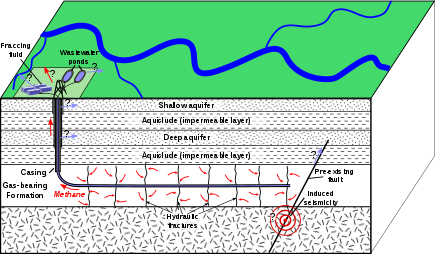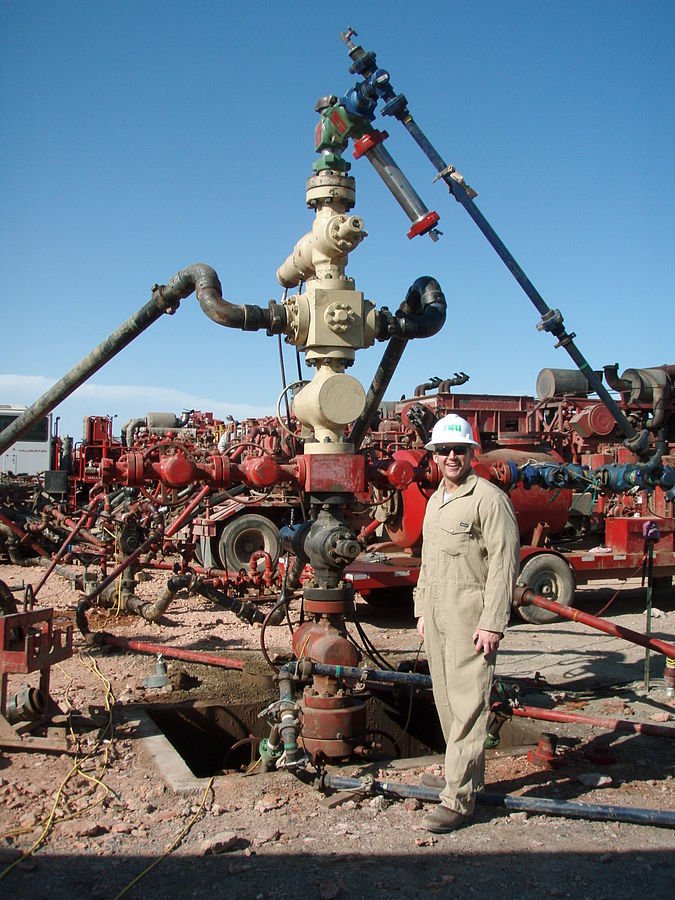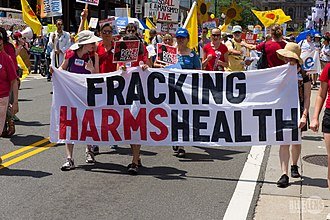Fracking: Our Natural Gas & Energy at Stake
The rise in oil and gas prices is crucial to the economic challenges that we must all address and resolve, given the stratospheric rise in practically everything on planet Earth. Of course, as the demand for renewable energy sources grows, we cannot fool ourselves into believing that we will soon be free of fossil fuels. The ecology and our precious climate are of deep concerns when it comes to how we obtain these fuels. This is the premise behind this blog, which aims to explain the concept of fracking and how it works to hivers! Why is it a cause of such vehement debate?
The truth is that deep beneath there are natural gas reserves that were previously inaccessible. Over millions of years, layers of decomposing organisms were exposed to extreme heat and pressure beneath the earth's crust, forming this gas. This natural gas has the ability to provide us with energy for decades. Fracking sites can be found anywhere there is natural gas, from the isolated desert to just a few hundred feet from our own backyards!
So, how does the fracking process work?

Schematic depiction of hydraulic fracturing for shale gas; Author-Mikenorton; License
It all starts with a "wellbore," a big vertical hole bored down through layers of sediment. The well reaches its "kick-off point" at (2500–3000) meters, where it can begin the process of "horizontal drilling." The wellbore then twists 90 degrees and travels horizontally for 1.5 kilometers through a crushed black stratum known as "shale rock formation." A specialized perforating gun is then lowered and fired, creating a series of small inch-long holes that burst through the well's casing into the rock layer.

Well head where fluids are injected into the ground; Author-Joshua Doubek; License
The well is ready for fracking 3–4 months after the original drilling. To begin fracking, a high-pressure fluid is poured into the well, cracking the shale rock and generating fractures through which trapped gas and oil can escape. The fluid is more than 90% water, with the remainder consisting of concentrated chemical additives. These are divided into three groups based on the specific characteristics of the fracking site:
-acids for clearing debris and dissolving minerals,
-friction reducing compounds to create a slippery form of water known as "slick-water" and
-disinfectant to prevent bacteria growth.
Sand or clay is also added to the water to prop open the cracks, allowing the gas and oil to continue to seep even after the pressure has been removed!
So, what exactly is the fuss about?
Fracking's vigorous pumping, and flushing require an average of 3-6 million gallons of water each well, according to estimates. In comparison, when it comes to agriculture, power plants, or even golf course maintenance, that's not much. However, it has the potential to have a significant influence on local water supplies, and disposal of used fracking water is also a concern.
Millions of gallons of flowback liquid gushes up alongside the trapped gas that is pumped to the surface. This liquid must be preserved and disposed of since it contains contaminants such as radioactive substances, salts, heavy metals, and hydrocarbons. This is normally done in deep well pits on-site or at water treatment facilities off-site. Recycling the flowback liquid is another alternative, however the recycling procedure can actually raise contamination levels because the water grows more hazardous with each usage.
To prevent toxins from escaping into groundwater, wells are normally covered in steel and cement, but any negligence or fracking-related accidents can be disastrous. Drinking water near a fracking site could be contaminated by fracking directly into underground water, dangerous underground seepage and leakage, and insufficient treatment and disposal of extremely toxic waste water. There's also concern about earthquakes and infrastructure damage caused by pressure and wastewater injection. The link between fracking and increased seismic activity raises unanswered questions regarding long-term pressure imbalances that could be occurring deep beneath the earth's surface.
The largest debate around fracking, though, is taking place above ground. The common view is that burning natural gas is better for the environment than burning coal since fracking gas emits half as much carbon dioxide per unit of energy as coal. However, the damage generated by fracking is not insignificant! Methane, which is several times more potent as a greenhouse gas than carbon dioxide, escapes out throughout the drilling and pumping operation. Some experts claim that because methane dissipates over time, it has a modest long-term impact, but the bigger question is whether fracking diverts time, money, and research away from the development of cleaner renewable energy sources.

Anti-fracking banner at the Clean Energy March (Philadelphia, 2016); Source; License
Natural gas is nonrenewable, and the short-term economic benefits of fracking may be outweighed by global climate change. Experts are still studying fracking's long-term impacts, and despite the fact that modern fracking has been present since the 1940s, it has exploded in popularity in recent decades. Nonrenewable energy's cost grows when other natural gas supplies decline, and cutting-edge technology make it so accessible. In response to environmental concerns, numerous governments and regions have already outlawed fracking. Fracking has undeniably changed the global energy picture, but for what long-term advantage and at what cost, one could ask?
Share your thoughts on the subject in the comments section below, hivers! Thank you for reading this far.
Read more here:
What is fracking and why is it controversial?
Fracking, explained
HYDRAULIC FRACTURING
How Has Fracking Changed Our Future?
Posted from HypeTurf
Interesting article, thanks !
Methane is 80 times more powerful as a greenhouse gaz compared to CO2. If I remember correctly, it's degraded after 20 years. That's still enough to be very impactful.
of course it is.. Guess that is why everyone is weary of the process. It's quite worthy to note that the Agriculture industry also releases the most amount of methane, but it seems everyone is ready to turn a blind eye to it.. Nobody wants to mess with food..haahaa! Big Oil seems to have stepped on so many toes i guess! Thanks for stopping by my blog!
Thanks a bunch for the pick!
Congratulations @mengene! You have completed the following achievement on the Hive blockchain and have been rewarded with new badge(s):
Your next target is to reach 25000 upvotes.
You can view your badges on your board and compare yourself to others in the Ranking
If you no longer want to receive notifications, reply to this comment with the word
STOPCheck out the last post from @hivebuzz:
Support the HiveBuzz project. Vote for our proposal!
Hello friend, within engineering I would recommend applying another mechanism of enhanced recovery of crude, if technology advanced in the preparation of the fracturing fluid perhaps it would not be so polluting to freshwater aquifers found in the subsurface.
Reservoir engineering that is studied within petroleum engineering does not study this practice, as a petroleum engineer I can tell you with all certainty that they did not teach this practice as a crude recovery mechanism, however I think it is a practice in which only its negative environmental impact needs to be improved.
Greetings and thank you for sharing this valuable post.
Glad you found this interesting enough to leave a comment. I actually agree with you on finding a better way to reduce the pollution aspect of the process. Perhaps engineers like yourself need to create more awareness amongst your peers especially those in academia. We've got only one earth, we should take care of it as much as we can!
!1UP
All da way!!
You have received a 1UP from @luizeba!
@leo-curator, @vyb-curator, @pob-curator, @neoxag-curatorAnd they will bring !PIZZA 🍕
Learn more about our delegation service to earn daily rewards. Join the family on Discord.
Thanks for your contribution to the STEMsocial community. Feel free to join us on discord to get to know the rest of us!
Please consider delegating to the @stemsocial account (85% of the curation rewards are returned).
You may also include @stemsocial as a beneficiary of the rewards of this post to get a stronger support.
Thanks for this very interesting blog, that I just found through to the distilled (I was away last week due to a conference, and I now need to catch up). I have a couple of (probably very naive) questions.
How do they choose when (i.e. at which depth) to start drilling horizontally?
Can’t we recycle used water? Does it really need to be fresh water?
I will finish this reply with a comment and a personal opinion.
Whereas it is important to have various sources of energy, in my opinion natural gas cannot really help more than on short term. Currently, the best mid-term option is definitely nuclear… However, this is by far not accepted by most… Yes, there are issues with nuclear energy, but compared with the issues associated with other sources of energy, I think that it is still a winning option (together with the development of alternatives).